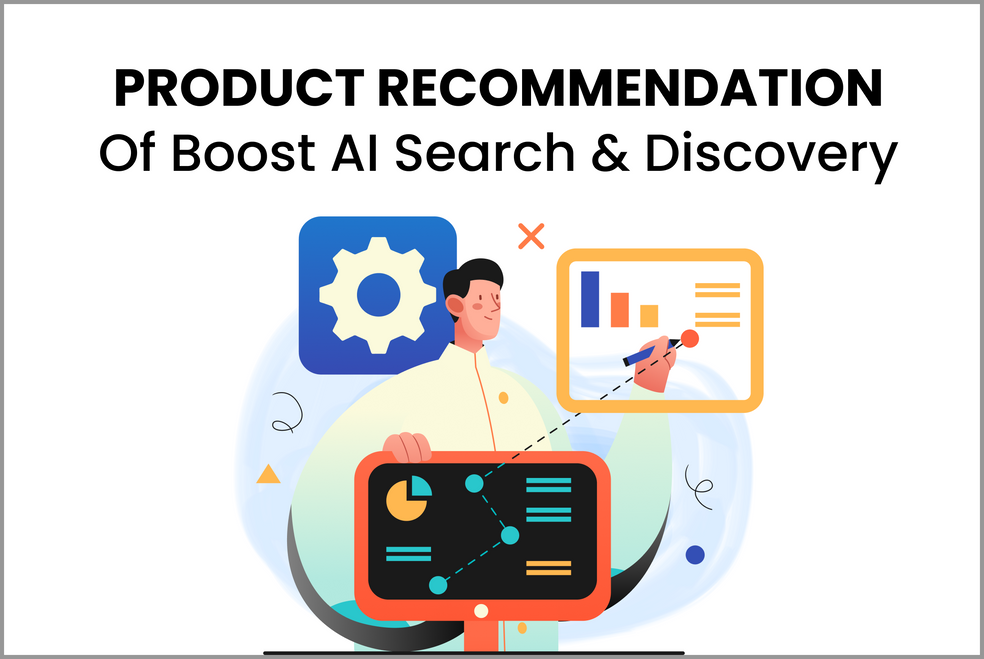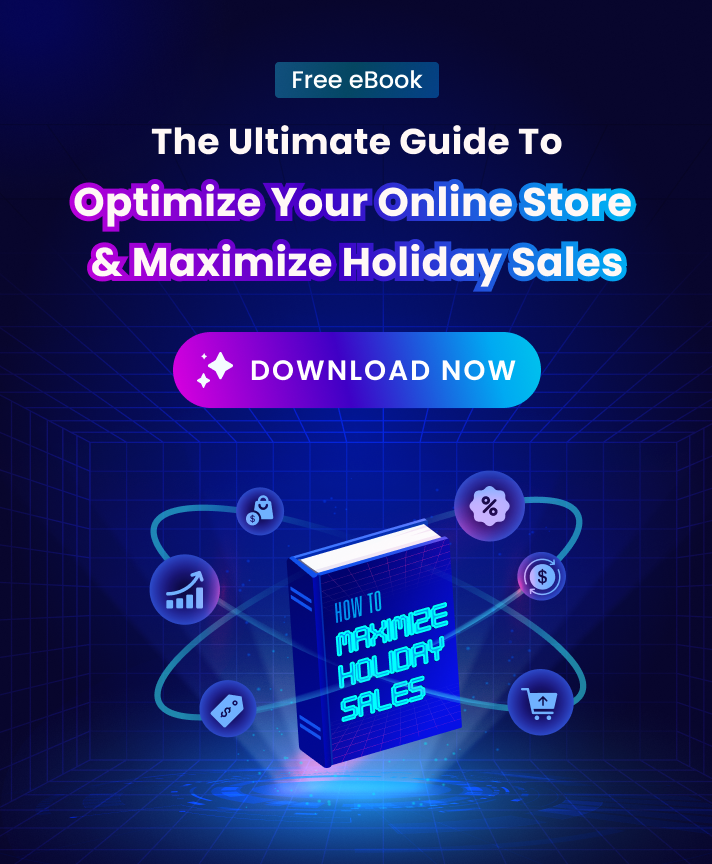In order to increase sales and foster client loyalty, your store should not only offer a discovery search but also a more approachable and welcoming experience with the help of available recommendations. Let’s look into discovery design for search to see which provides your customers with the best overall experience.
What is Discovery Design for Search?
The process of discovery is how your buyers consider your online presence in the marketplace. Buyers will find it easier to edit the listing of their searching items with the help of a good site search UX. This raises the bar on buyer satisfaction and helps drive conversion rates.
Discovery design for search in Shopify enables buyers to locate which items are available and promoted in an online store. For example, there are several types of designs on the search by name, tags, attributes, available recommendations for search, search merchandising, etc.
What is Discovery Design used for?
The time of the shopper is limited. They click away when they cannot spot what they are looking for or when they do not see anything that grabs their attention. 85% of consumers reported that their view of a brand had changed after a negative website search experience.
Discovery design for search tools on your website can be improved and optimized to give you a competitive advantage by enabling you to:
Consider which products users can see on top
Because you are the one who knows the bottom gut of your customers, you are able to set up the top list of items in your inventory that will kindle their interest. You can add specific product collections during store promotion campaigns by rule-based merchandising.
Nurture customer loyalty and improve the shopping experience
Customers save time when they get what they want with no effort. The search makes it easier for them to find other similar things they might need making it more likely that they will come back to your store.
Remember to deliver incredibly appropriate results and cut down on “No Products Found” errors to encourage more searches. For example, if they want to buy a Coban blue knit T-shirt that is not found in your store, your search should recommend another result like a Black knit T-shirt or similar products that match their previous search.
Drive more leads and accelerate your sales
It makes sense that your overall sales would rocket if customers were successful in completing their customer journeys and discovering the products they were looking for, whether through search or discovery.
Furthermore, if you do not follow Shopify’s SEO best practices, you risk losing out on a lot of potential leads. They will spend, on average, 2.6 times more than people who only browse a website. (Consider the difference between a customer who enters a store and specifically requests a product and one who is “just window shopping”). Customers who swiftly and readily get what they want might be more open to discovering new products.
With discovery design for search, you can add related products with a set of attributes you want to recommend on product detail pages on top of the automatically generated recommendations provided by smart site search.
Discovery Design for Search Examples
Instant search display
Shopify Search & Discovery application can help your customers locate only fixed results you set up before without any attributes or recommendations.
Suggestion Dictionary
A top list of matched or related results will be shown to you when you go shopping with an idea in mind and do a search for it. For instance, Partake Food’s search engine will suggest relevant products if you type in “cookies” and include suggestions for soft-baked pumpkin spice cookies, soft-baked lemon cookies, soft-baked double chocolate brownie cookies, etc.
Shopify search merchandising
The product Ranking feature allows you to modify how specific products appear on search results pages. Or you might use Rule-based Merchandising to rank a collection of goods with the best matches.
Shopify Search redirect
This setting enables users to go straight to a certain page after typing a keyword and tapping the “enter” key. When people are searching for words like discount, promotion, or on sale, use this to direct them to the Sales collection.
Discovery Design in Search: Related terms
Search vs. Discovery
Shopify search gives users a shortcut to a result page that will be in tune with their expectations. On the other hand, discovery features that are named after “Related Products”, and “Other shoppers also bought” during item search boost cross-sell and upsell rates after their initial purchase.
Let’s imagine that you go to a Shopify website with a very specific item in mind, say, a pair of black hiking shoes in a size 10. You enter “black hiking shoe size 10” into the Shopify search field. You are utilizing the search bar to find what you are looking for because you are certain of what it is.
Now, as you’re hunting for your black hiking shoes, a pair of grey trainers that you truly enjoy is recommended. To learn more, click on them. This is an illustration of discovery; prior to discovering this product while hunting for something else, you weren’t truly aware of it.
Best practices in Discovery Design
Achieving the top search and discovery results for your customers can increase conversions, sales, and customer loyalty. Here’s how to make discovery design for search more effective for your clientele:
#1: Keep search results relevant
Even though you might not be able to read your customers’ minds and predict their exact search terms, you can still make an educated estimate. Even if you may carry a range of women’s clothes, would visitors who want knee-high or ankle boots use different search terms?
Shoppers will locate what they are looking for if you use as many pertinent search terms as you can in your product descriptions and tags. This will also keep your results relevant to those who are browsing for your products. You should also take the possibility of mistakes into account when creating your Shopify search terms. Additionally, consumers can search using plural phrases, such as “shoes” as opposed to “shoe.” In any case, you want to guarantee that your products can be located regardless of the search method used.
#2: Adding filtering to your search
By including filters in your search engine, you can help customers find exactly what they’re looking for while saving them time. The various characteristics of a product, such as its color, size, or style, are known as search facets. They assist customers in clarifying their search objectives and focusing their results in order to locate the ideal goods.
#3: Making their hidden needs come in hand
Cross-selling, or suggesting other products to customers, can boost your revenue and improve customer satisfaction if done correctly. When you observe what they are looking for or ordering, you can add something extra to their purchase, such as a matching body lotion to their face cream purchase, an umbrella to go with their raincoat, or additional toothpaste for their electric toothbrush. Additionally, cross-selling might provide them with options if they are having problems making a decision.
#4: Deliver personalized recommendations
Products under headings like “similar products” or “you might also like these” are examples of personalized recommendations that appear alongside search results. They can be an effective technique to direct customers to the things they are most likely to purchase because they are based on the shopper’s search history and previous behavior on your website. You may upsell, cross-sell, and persuade customers to add more goods to their carts by using personalized recommendations. The nicest aspect is that they are entirely automatic. They will take care of the work for you once you have set them up.
#5: Mobile-friendly discovery design
More and more individuals are using their mobile devices to shop these days. In fact, mobile will be responsible for 60% of all eCommerce sales in the UK in 2021. This entails having a mobile-optimized search and discovery experience in addition to having a responsive design that looks nice and is simple to use across all screen sizes.
#6: Autocomplete search for better discovery design
As the user types, the autocomplete search tool recommends possible search phrases. This accomplishes two goals. First off, it might make it easier for customers to find the ideal product. The second benefit is that it lessens difficulties like typos, which can result in search results that are either irrelevant or incorrect. Autocomplete is a fantastic method to enhance your website’s users’ Shopify search experience, and you should have it activated if you want to follow search best practices.
#7: Locating shoppers in searching
Depending on the things you sell, this might not always be appropriate. But it makes sense to base search results on the shopper’s location if you sell goods that are only offered in particular areas. In this approach, they will only see results for goods that are within their reach. This is something that Shopify makes simple to set up and may save you a ton of time and frustration. Additionally, you can have goods that do exceptionally well in particular geographic areas. Customers from one city or country might be more interested in a particular product than customers from another area. If this is the case, you can use search results to send related products to these customers.
#8: Apply Machine learning recommendations
Machine learning is the ability of computers to learn from their experiences and advance for better relevant experiences. This implies that search outcomes for Shopify stores may improve over time. Your search results will be more precise if you have more data. This is so that machine learning algorithms can account for a wide range of variables, such as past search and purchase behavior, abandoned browsing sessions, etc. The system will eventually be able to anticipate what customers would most likely buy and show them the most pertinent results.
Summing up
In fact, 46% of customers feel more comfortable when choosing an eCommerce site with the ease of searching and discovering products. You can miss out on a lot of potential sales if your store’s search options are not optimized.
















